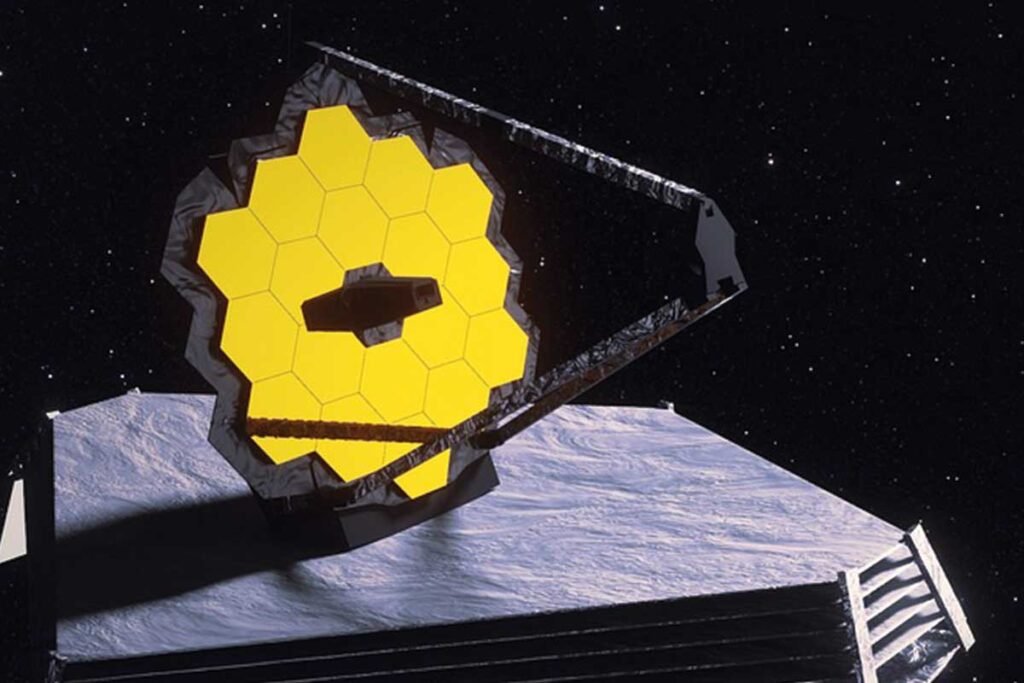The James Webb Space Telescope has recently made an incredible discovery. It captured an astonishing 45,000 galaxies in just one picture! But let’s take a step back and think about what things were like when the universe was just beginning.
Scientists at the University of Arizona are using the James Webb Space Telescope to explore the universe and uncover its secrets. Their project, called JADES, aims to answer important questions about the early galaxies. They want to know how these galaxies formed, how fast they created stars, and why some of them stopped forming stars altogether.

The Webb telescope is the largest and most powerful space telescope ever built, with a primary mirror that is 6.5 meters (21 feet) in diameter.
The team focused on studying galaxies that emerged between 500 and 850 million years after the Big Bang. This period is called the “Epoch of Reionization,” and it was a time when the universe was filled with a foggy gas that blocked energetic light like ultraviolet or X-rays.
The data collected by the Webb telescope revealed 717 young galaxies, which is more than what scientists expected. These galaxies were already thousands of light-years across, indicating that the universe evolved rapidly during that time.
The discovery of early galaxies is like peering into the cosmic past. These galaxies formed billions of years ago, and studying them gives us valuable insights into the early stages of the universe’s evolution.
What’s fascinating is that these galaxies showed something called “episodic bursts of star formation.” This means that they had periods of intense star formation, followed by quieter periods with fewer stars being born.
The team was particularly interested in finding signs of star formation in these galaxies. To their surprise, they discovered that almost every galaxy they observed had strong signals indicating recent and intense star formation.
In simple terms, these early galaxies were experts at creating hot and massive stars. They went through cycles of rapid star formation and quieter periods, which is quite remarkable.
Thanks to this program, astronomers have identified over 700 potential galaxies that existed at a redshift above 8. This data is incredibly valuable and will completely transform our understanding of how galaxies formed in the early stages of the universe.